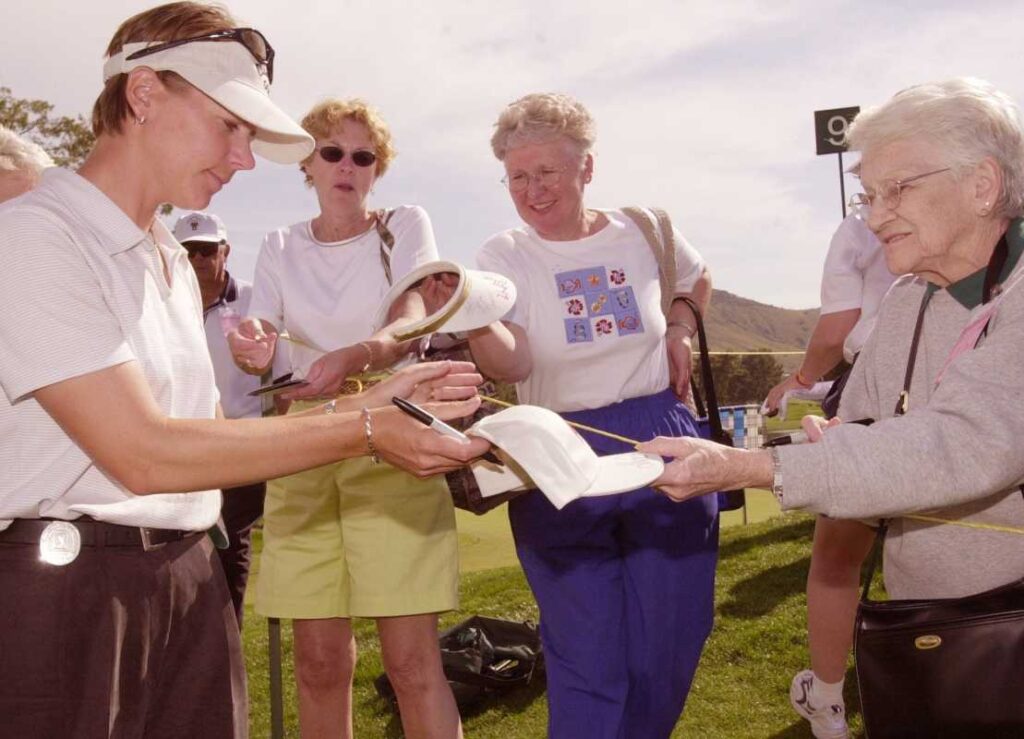A True American Story — LPGA Celebrates 75 Years originally appeared on Athlon Sports.
Circa 1940’s, United States of America: Babe Zaharias crushing drives past the 250-yard marker while her male competitors scratched their heads. Louise Suggs stepping up to the tee with that silky swing that made golf look like a gentle dance. Patty Berg standing over a 12-foot putt with the tournament on the line, ice water in her veins.
These weren’t just good golfers—they were revolutionaries who happened to carry golf clubs.
In 1950, these three women walked into Rolling Hills Country Club in Wichita, Kansas, with ten other players and basically said, “Screw it, we’re starting our own tour.” No corporate sponsors begging to write checks.
No TV executives promising prime-time slots. Just thirteen women with enough guts to bet their careers on an impossible dream.
Compare that to today’s LPGA, where players will compete for $131 million across 33 tournaments in 2025. Not bad for an “impossible dream.”
The real explosion came in 1998 when Se Ri Pak showed up as a rookie and demolished the field at both the U.S. Women’s Open and LPGA Championship. Suddenly, golf academies across Korea were packed with kids who wanted to swing like Se Ri. She didn’t just win tournaments—she created a pipeline of talent that dominates today’s leaderboards.
Want to talk about money? Prize purses have grown by 252,500% since 1950. That’s not a typo. The five major championships alone will pay out $47.8 million in 2025. Meanwhile, TV coverage has exploded from a few grainy broadcasts to multi-network deals that put LPGA stars in living rooms from California to South Korea.
Technology has completely transformed the game. These players aren’t just talented—they’re data-driven athletes who know exactly how their 6-iron performs at 147 yards with a 12-mph crosswind. Launch monitors tell them everything. GPS systems map every blade of grass. Fitness programs have created golfers who routinely bomb 270-yard drives and stick approach shots within putting distance.
But here’s what hasn’t changed: the LPGA is still about precision over power, strategy over strength. Watch Lydia Ko (who’s earned over $20 million in her career) work her way around a tough course, or see Thailand’s Atthaya Thitikul attack pins with the kind of controlled aggression that would make Arnold Palmer proud.
The tour isn’t perfect; with the challenges we face as a society at large finding their way into sports, it’s not always easy to make decisions.
The pay gap with men’s golf remains frustratingly wide. But the LPGA keeps pushing through strategic partnerships, better marketing, and simply putting on great golf tournaments. Progress is slow, but it’s real.
Seventy-five years later, the LPGA has become something those thirteen founders couldn’t have imagined: a global institution where the world’s best female athletes compete for millions while inspiring kids in driving ranges from Bangkok to Birmingham to chase their own dreams.
The next chapter? It starts with the next tee shot.
Related: The Soul of American Golf: A Journey Through the Game’s Heart and Heritage
Related: Keegan Bradley’s 2025 Ryder Cup Vice Captains Could Deliver Victory to US
Related: Allow Me to Introduce Myself
This story was originally reported by Athlon Sports on Jul 4, 2025, where it first appeared.
Read the full article here


